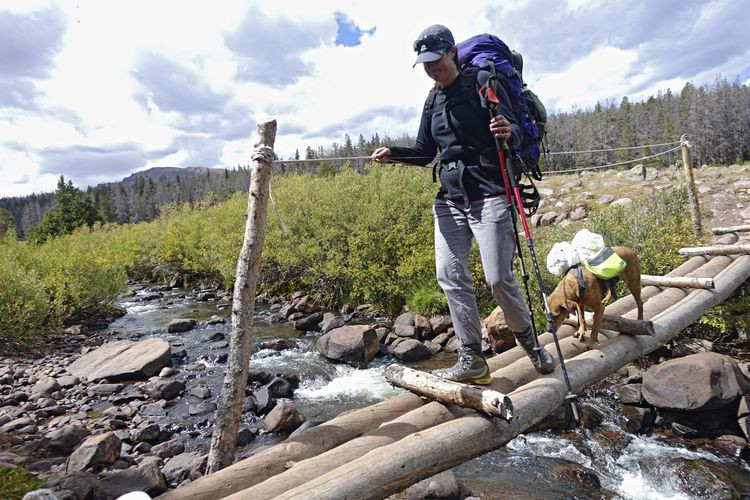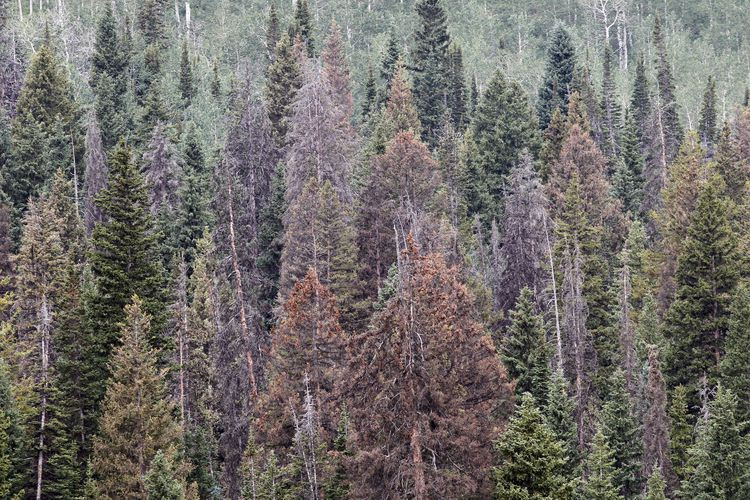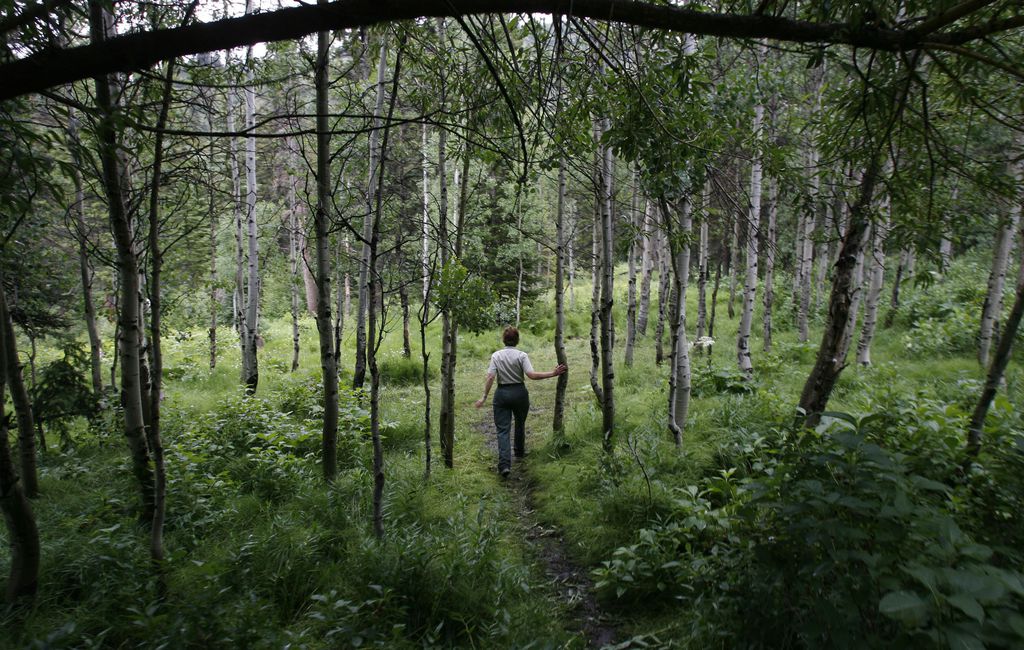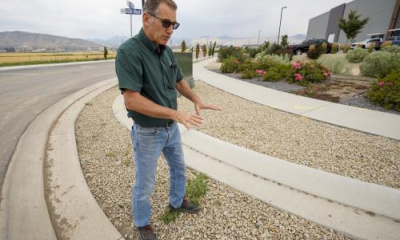A recent report concludes thinning Utah’s forests “is not guaranteed” to increase the water flowing to the Great Salt Lake, and has the potential to decrease it instead.
First came the pipeline to the Pacific Ocean. Then came nuclear-assisted groundwater mining. Now, forest thinning is the latest fantastical idea floated to rescue the Great Salt Lake.
But research published last year shows thinning trees in the watershed won’t help the lake refill. In some cases, it could make things worse.
Even from a practical perspective, substantial mechanical thinning of Utah’s forests is nearly impossible. Most of those lands are managed by the U.S. Forest Service. They included vast swaths of wilderness and roadless rule areas — about two-thirds of the Uinta-Wasatch-Cache National Forest — where most timber cutting is prohibited. The forests also largely cover mountains with slopes too steep for the needed machinery.
The Uinta Mountains, however, had a natural thinning event more than a decade ago when bark beetles ravaged the national forest. Today, about one in four of the trees across that range are dead, mostly due to insects, according to information provided by the U.S. Forest Service. That includes areas lumberjacks can’t access.
The Uintas are also the headwaters for the Great Salt Lake’s tributary rivers, which include the Bear, Weber and Provo-Jordan systems. And even with all that thinning, the lake has continued to shrink. Studies published after the massive die-offs across Western forests show it didn’t lead to surges in stream flows.
“That ‘natural thinning event,’ I have not used that phrase and I really like it,” said Sara Goeking, a biological scientist with the U.S. Forest Service Rocky Mountain Research Station, “... That’s what the mountain pine beetle epidemic really was. And there were a handful of studies that showed water yield didn’t increase, it didn’t change. Some of them found some decreased water yield.”

Lennie Mahler | The Salt Lake Tribune Amanda Wagner crosses a precarious bridge at Elkhorn Crossing along Henrys Fork Trail in the Uinta Mountains. Monday, Sept. 5, 2016.
It ran counter to prevailing beliefs at the time — forestry scientists had hypothesized since at least the 1960s that reduced forest cover would yield more water. While working on her Ph.D. in watershed sciences at Utah State University, Goeking wanted to explore why it wasn’t always the case in forests across the West.
“Most of the studies were done in wetter places,” she said. “No one ever really thought maybe that doesn’t hold true everywhere.”
Goeking collected data on forest disturbances like beetle outbreaks, wildfire and drought at 159 watersheds across the region, including some in the Uinta Mountains. She also analyzed streamflow measurements and climate information for those sites over a 20-year period.
The results showed that in wetter climates, natural forest thinning events did boost water yields. But throughout a lot of the West, it made no difference. In arid climates, “decline in water yield was even greater than if there were no forest disturbance,” Goeking said.

(Al Hartmann | The Salt Lake Tribune) An Engleman Spruce forest shows various stages of dying from bark beetles in the Soapstone Basin area of the Uinta Mountains in 2012.
Trees provide a lot of benefits to watersheds, too. They prevent destructive runoff events that dump sediment in reservoirs and balloon costs for water treatment plants. They shade the snowpack and forest floor so melting water doesn’t evaporate in the hot sun or get sucked dry by baked soils.
“If you ski, you already know this,” Goeking said.
She published her findings in the journal Water Resources Research in May 2022.
People, not trees, are to blame for the Great Salt Lake’s collapse
The Great Salt Lake Strike Team, a group of Utah academics and resource managers, issued a report Wednesday that drives home a point scientists have made for years. The only thing to blame for the lake’s decline is human water consumption. Conservation is one of the cheapest, most pragmatic ways to get it to rise again.
In fact, the Strike Team delayed the release of its report so it could scramble to include a rebuttal — or what USU professor David Tarboton called a “balanced perspective” — to the forest-thinning theory.
“The report was supposed to be out a couple weeks ago,” he said. “The hope was for the beginning of the Legislature.”
Tarboton is a member of the Strike Team, the director of the Utah Water Research Laboratory and a co-author of Goeking’s watershed study.
“There have been ... earlier, extensive forest harvesting activities and streamflow didn’t increase,” Tarboton said. “A lot of the restoration that has been done in forests [since] has been done with the goal of improving water quality.”
The Strike Team report concludes thinning Utah’s forests “is not guaranteed” to increase the water flowing to the Great Salt Lake, and has the potential to decrease it instead. It does have some side benefits, however, according to the report. Most importantly, it helps reduce wildfires that could otherwise prove catastrophic for the lake’s watershed.









